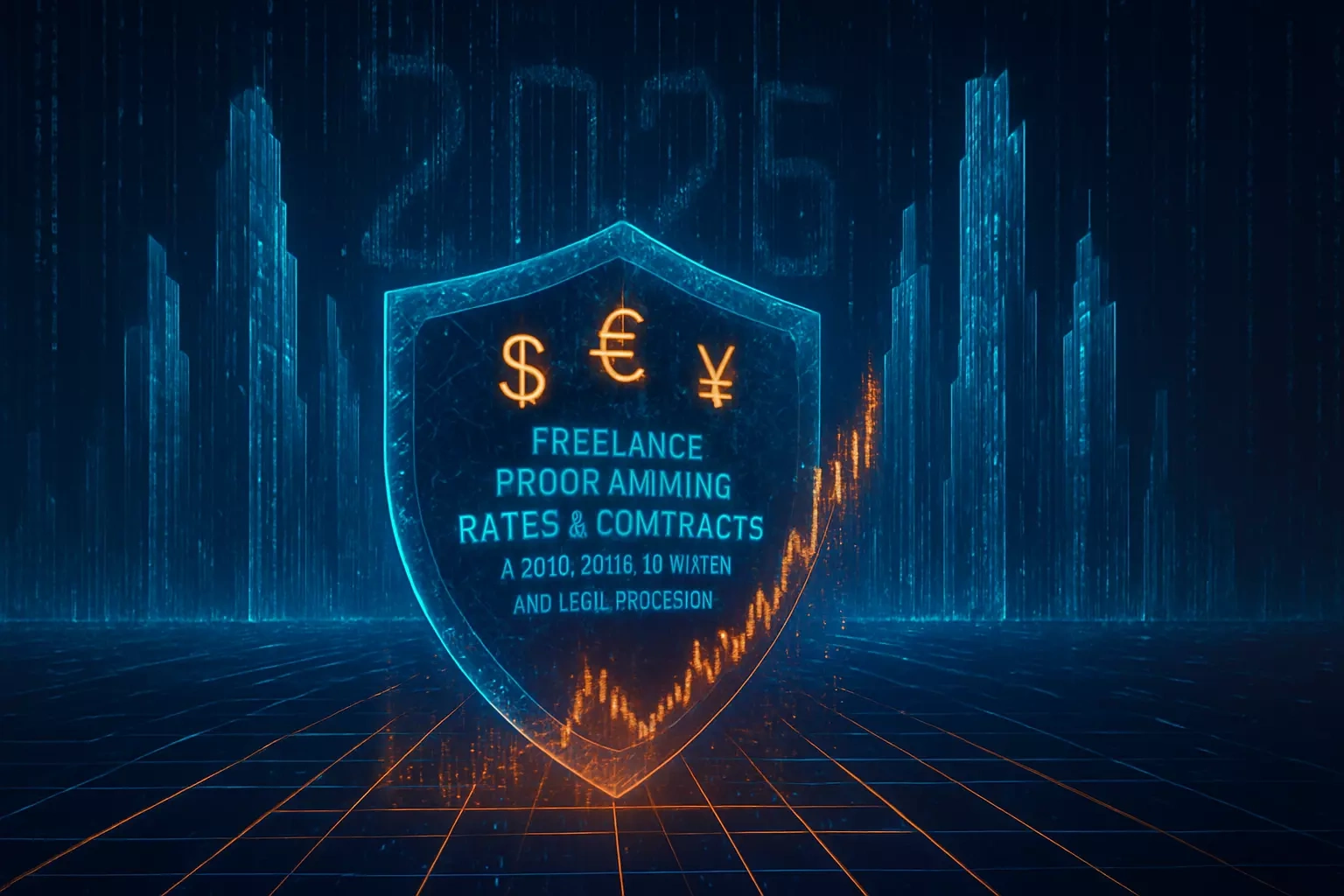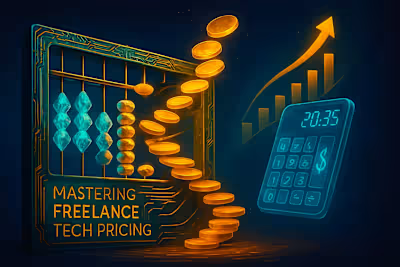Freelance Programming Rates & Contracts: A 2025 Guide to Pricing and Legal Protection

Freelance Programming Rates & Contracts: A 2025 Guide to Pricing and Legal Protection
Understanding Different Pricing Models
Hourly Rates: Pros, Cons, and Setting Your Rate
Project-Based (Fixed) Pricing: When and How to Use It
Value-Based Pricing: Aligning Price with Client ROI
Retainer Agreements: Securing Ongoing Work
Factors to Consider When Setting Your Rates
Your Experience Level and Skill Set
Project Complexity and Scope
Market Rates and Demand for Your Niche
Value Provided to the Client
Overhead Costs and Desired Income
The Importance of a Freelance Contract
Why You Should Never Work Without a Contract
Key Elements of a Freelance Programming Contract
Essential Clauses for Your Freelance Contract
Scope of Work (Deliverables and Revisions)
Payment Terms (Rates, Invoicing, Late Fees)
Intellectual Property Rights
Confidentiality Clause (NDA)
Termination Clause
Dispute Resolution
Negotiating Rates and Contract Terms
Preparing for Negotiation
Communicating Your Value Effectively
Handling Objections and Finding Compromises
When to Walk Away
Conclusion
References
Freelance Programming Rates & Contracts: A 2025 Guide to Pricing and Legal Protection
Understanding Different Pricing Models
Hourly Rates: Pros, Cons, and Setting Your Rate
Project-Based (Fixed) Pricing: When and How to Use It
Value-Based Pricing: Aligning Price with Client ROI
Retainer Agreements: Securing Ongoing Work
Factors to Consider When Setting Your Rates
Your Experience Level and Skill Set
Project Complexity and Scope
Market Rates and Demand for Your Niche
Value Provided to the Client
Overhead Costs and Desired Income
The Importance of a Freelance Contract
Why You Should Never Work Without a Contract
Key Elements of a Freelance Programming Contract
Essential Clauses for Your Freelance Contract
Scope of Work (Deliverables and Revisions)
Payment Terms (Rates, Invoicing, Late Fees)
Intellectual Property Rights
Confidentiality Clause (NDA)
Termination Clause
Dispute Resolution
Negotiating Rates and Contract Terms
Preparing for Negotiation
Communicating Your Value Effectively
Handling Objections and Finding Compromises
When to Walk Away
Conclusion
References
Posted Jun 11, 2025
Learn how to price your freelance programming services effectively and understand essential contract clauses for legal protection in 2025. Maximize your earnings!
0
118







